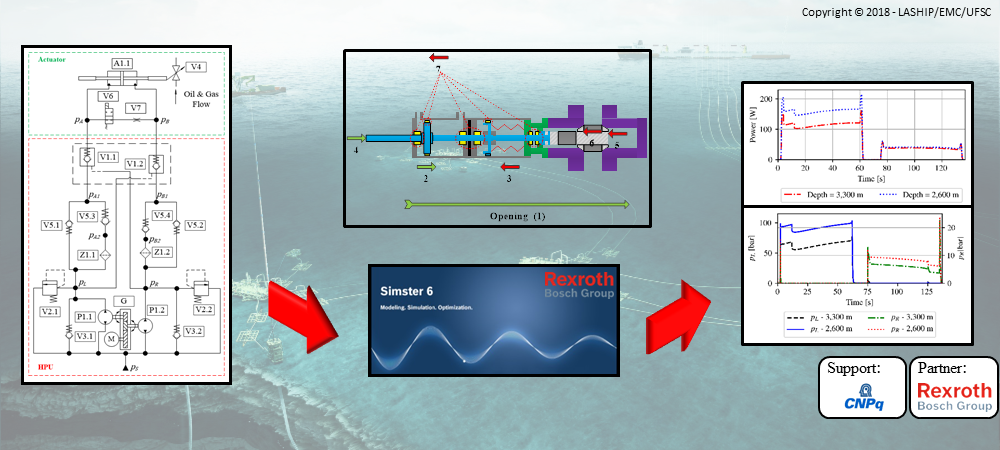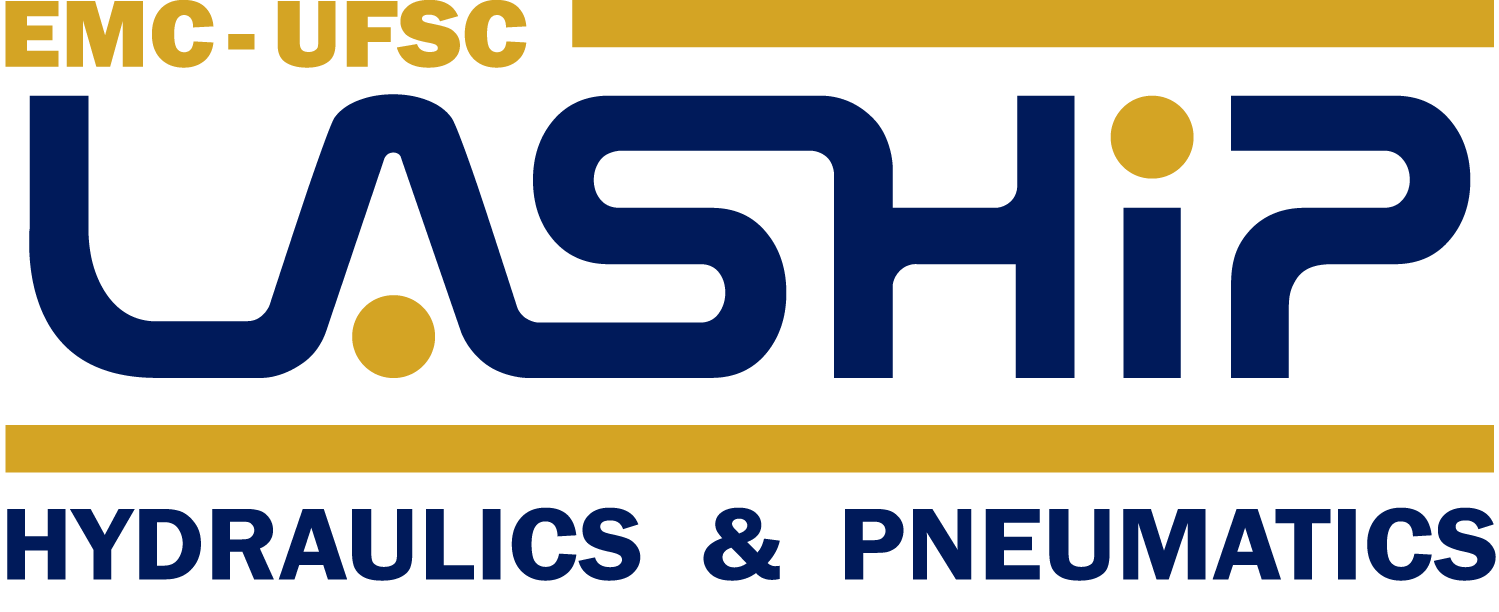Candidate: Rafael Matos Goularte
Program: UFSC / POSMEC
Date: March, 2018
Advisor: Victor Juliano De Negri, UFSC
Co-Advisor: Alexandre Orth, Bosch Rexroth
Abstract: The oil production has been operating farther away from the coast and consequently at greater depths. These factors demand reliable, safety and energy efficient systems with attractive costs. The objective of this work is to analyze the dynamic performance of a Subsea Electro-Hydraulic Actuator that has an integrated Hydraulic Power Unit. This system is designed to operate on Wet Christmas Tree that is capable of operating at a depth between 2,500 and 3,300 meters. A mathematical model is developed to evaluate the performance of the system in cosimulation. The hydraulic system model and controllers are implemented in Simster simulation software. A model representing the forces acting on the gate valve, the effect of the pressure due to the water column, and the pressure drop along the oil duct are modelled in MATLAB Simulink. The two simulations are executed simultaneously in order to evaluate the system behavior. The observed parameters are the pressures in the chambers of the hydraulic cylinder, the response time to perform the functions for the gate valve, the positioning ability of the actuation system and the energy consumption of the system. The electro-hydraulic actuator connected to an HPU has low power consumption for opening and closing of the gate valve, since it uses a hydraulic system with variable speed pump. In addition, this allows a smooth curve of acceleration and deceleration of the actuator, as it avoids peaks of pressure inside the hydraulic circuit. The results also show that the time to open or close the gate valve is less than 60 seconds, which is a safe condition for gate valves with 2 1/16″ diameter. Simulations also indicate that the most critical conditions for the actuator are the begin of the opening and the end of the closing of the gate valve. This is due to the increase of the pressure difference through the valve that results in a large force on the upper surface of the valve. Conclusions about the system performance, energy consumption and other advantages of the system architecture are presented in the document.
Reference: GOULARTE, R. M. Análise de Desempenho Estático e Dinâmico de um Atuador Eletro-Hidráulico para Águas Profundas. 2018. 137 p. Dissertação de Mestrado. Universidade Federal de Santa Catarina



